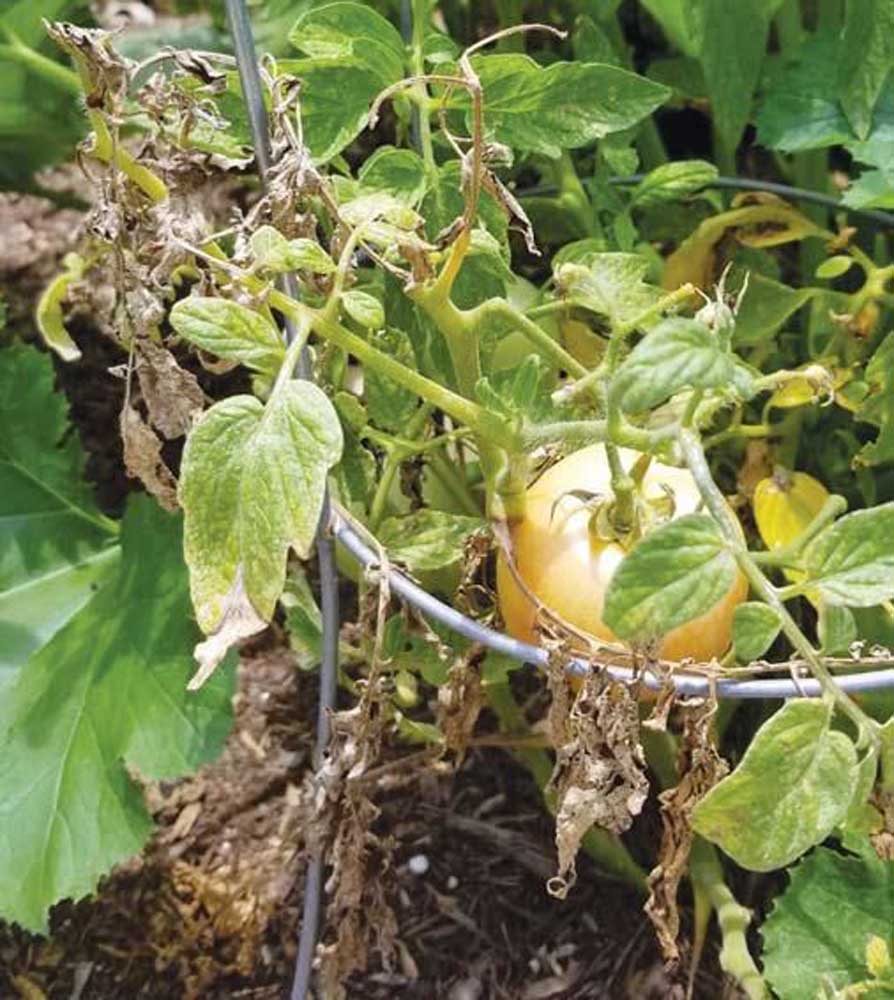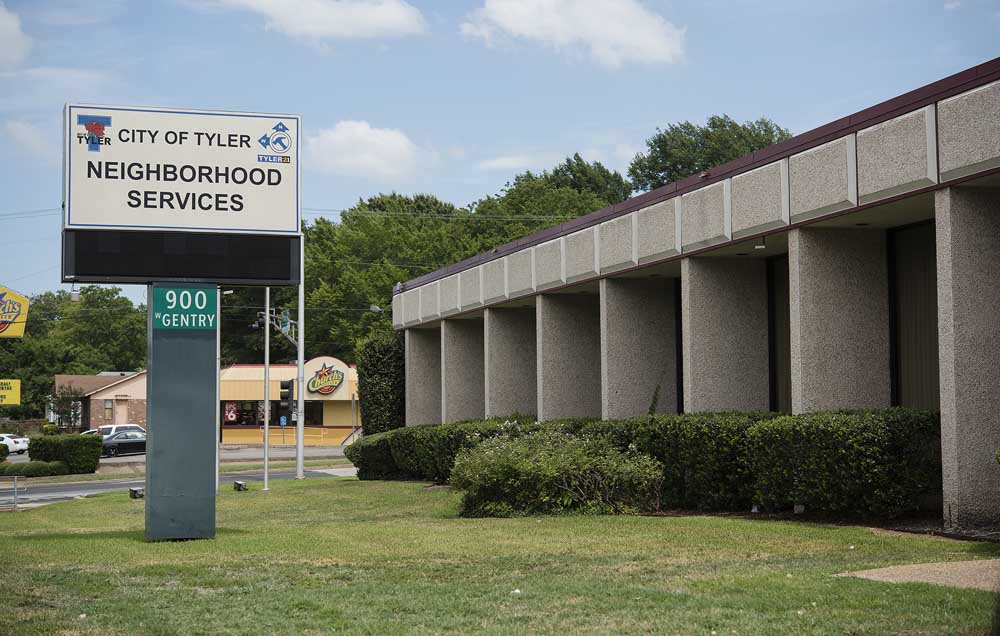Phytophthora water mold fungus likely killed vinca
Published 2:56 am Thursday, June 7, 2018

- THIS TOMATO plant bears the damage of early blight and spider mites
Dear Neil: For the past two years I’ve been unable to grow vincas. I have replanted twice each year. I’ve used fresh potting soil and the plants still died. Can you help me?
A: Odds are about 100 percent that your plants have been succumbing to the water mold fungus Phytophthora. It’s a companion to Pythium and Rhizoctonia, two other notable funguses that cause “damping off” of young seedlings. Phytophthora, however, attacks much more mature plants. Infected stems look like they have had a hot knife laid against them causing gray, sunken lesions. All of the leaves above the lesions soon wilt and turn brown. The disease spreads until the entire plant dies. Unfortunately, this fungus accumulates in the soil and remains viable for years. Once you lose periwinkles to it you should probably not plant them in that bed again, even into amended or replaced soil. Suggestions going forward: use selections of the Cora strain of vincas. They have been bred for resistance to the disease. Grow them only in raised beds in full sunlight. Growing them in pots is even better. Avoid overhead irrigation whenever possible. Mulch the bed to reduce water splashing up onto the stems.
IRON DEFICIENCY
Dear Neil: We have a house in the Hill Country. Our red oak is bright yellow and going downhill. Can it be saved, or should we find a replacement?
A: This is not a Shumard red oak, which is probably what was specified. It looks more like a pin oak (Quercus palustris), which is an acid-loving species native to the eastern half of the country. It is often sold unknowingly by retailers who buy it from growers back east. After a few years this severe iron deficiency starts to develop if it’s planted in alkaline soils. Frankly, it’s really not possible to turn things around. You need to plant a true Shumard red oak and get started with a new tree.
TOMATO DAMAGE
Dear Neil: I have four varieties of tomatoes, and all of them have started dying. What is causing the problem you can see in my photo?
A: Your photo looks like early blight got them a couple of weeks ago. It shows up as yellow blotches on the lower leaves. They quickly turn entirely yellow, then they turn brown and become crisp. I’m also seeing spider mite damage, as evidenced by the yellowed mottling on the leaves. Thump one of them over a sheet of white paper. If you see almost-microscopic specks starting to move around, those are the mites. Apply a general-purpose insecticide labeled for spider mites to control them.
PRIVACY TREES
Dear Neil: What are the best fast-growing trees and tall shrubs we can plant for privacy from the new homes on either side of our house? We have only 2 feet of topsoil.
A: First of all, give up “fast growth” as a criterion. That will take you down some dark paths. Go for quality and longevity instead. The best tall-growing trees would be Shumard red oak, bur oak, Chinese pistachio and cedar elm. All of those should do fairly well in 2 feet of topsoil if you keep it consistently moist. Little Gem southern magnolias would be great, but they’re a bit slower growing. On the other hand, you can also buy them in larger containers for more immediate good looks, plus they’re evergreens for year-round privacy.
RETAMA COLD DAMAGE
Dear Neil: We have property where we had two large retama trees. They had been growing for three years, but this year they seem to have been hurt badly by the cold. The branches still appear to be green, but they have no leaves at all. Should I cut them way back, or are they dead?
A: If there is any life left in them you should be seeing it by now. Give them a couple more weeks. If you see nothing happening, get new ones planted soon so they can become well rooted before winter. Or you may prefer to plant something else.
LIVE OAK ROOT GROWTH
Dear Neil: I have a live oak tree adjacent to my driveway. Its roots are starting to push up the perimeter bricks. Is there anything that can be done to prevent further damage without taking the tree out?
A: Oh, there must be! I can’t tell how wide your drive is, but perhaps you could cut a semi-circle into it to allow a bit more root room. You could also have a certified arborist determine the size of any roots headed that way and aim to remove one or more this fall, after the peak water demand season of summer has passed. The arborist might be able to install a deep root barrier to keep the roots from coming back toward the drive.
FULL-SUN GROUNDCOVER
Dear Neil: What would be the best full-sun groundcover to use in an area that is surrounded by river rock?
A: My top choice by far would be purple winter-creeper euonymus. It loves the heat, while it also does very well in partial shade should that develop later on. It’s a great groundcover that holds the soil tenaciously.
EARLY PECAN DROP
Dear Neil: Why would my pecans be falling now (early June)? Every day I find a bunch more. This is the first year my young tree has had any pecans.
A: I was curious what others might say, so I did a quick scan of the Internet. Extension specialists say that things like drought, sudden heat, poor pollination and over-production can cause it. All of those are possible for a young tree in its first year to bear, and especially in this difficult year. Keep the faith. Things will get better.
Have a question you’d like Neil to consider? Mail it to him in care of this newspaper or e-mail him at mailbag@sperrygardens.com. Neil regrets that he cannot reply to questions individually.






